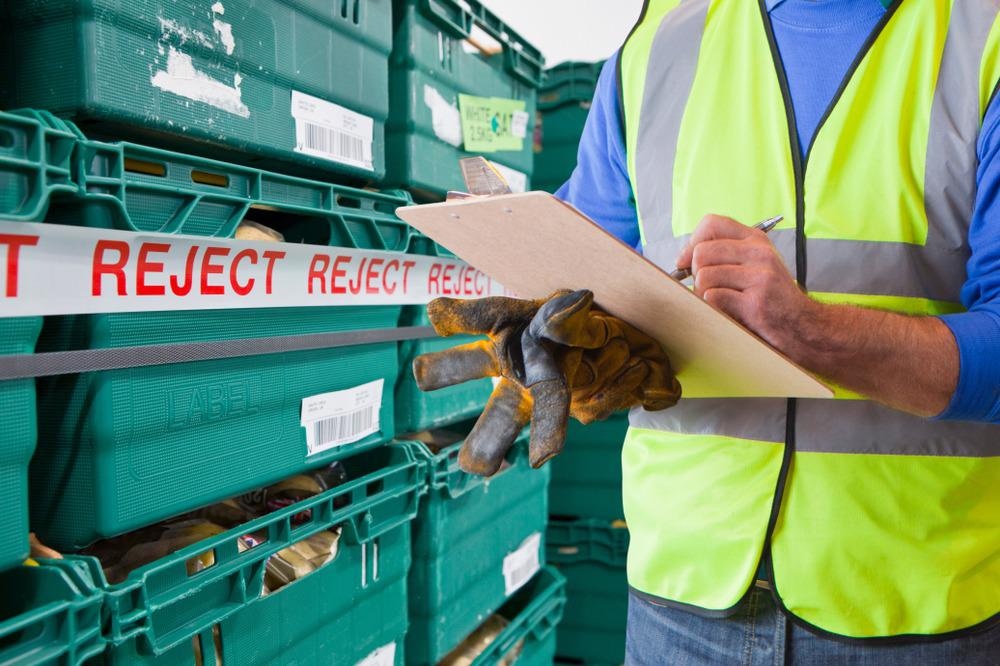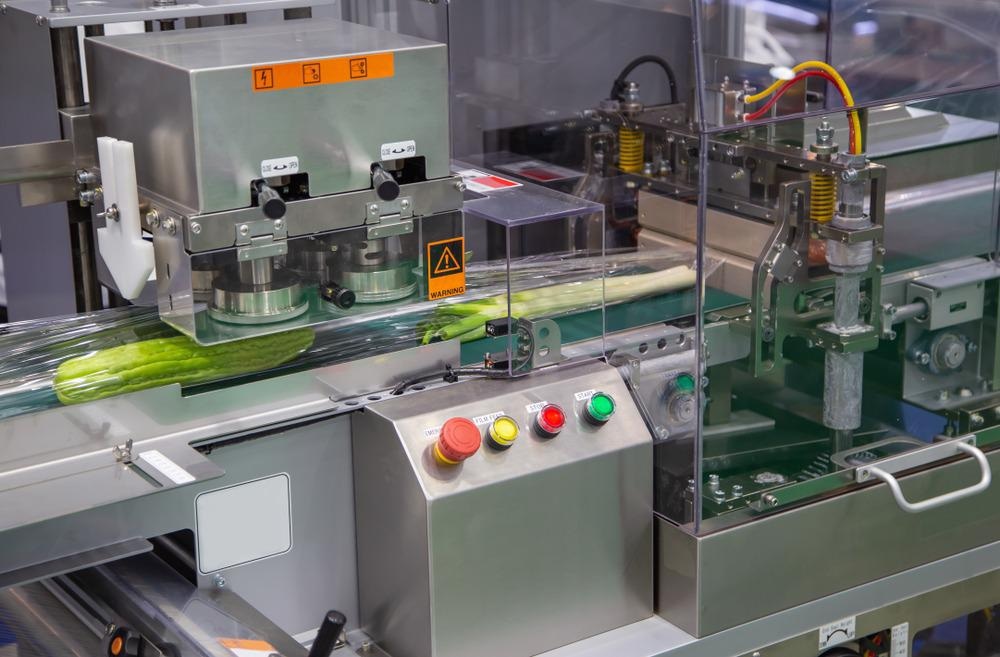This article discusses the necessity for food waste reduction, which can be achieved with the introduction of non-destructive testing and its methods.

Image Credit: Juice Flair/Shutterstock.com
Food waste reduction is a significant goal for customers, organizations, and authorities looking to be budget-conscious, increase food production levels, reduce global warming, minimize plastic consumption, and conserve the environment.
Need for Food Waste Reduction
According to the United Nations Environment Programs' Food Waste Index Report, 931 million tonnes of food were wasted annually in 2019 by homes, shops, cafes, and other food premises, accounting for 17% of total food supplied to consumers.
This waste is taking place when 690 million people are suffering from starvation. Food waste minimization has several advantages for humans and the environment, including improved food supply, fewer emissions, cost savings, reduced stresses on ecology and the atmosphere, and the creation of possibilities for the economic system. As a result, the United Nations' Sustainable Development Goal (SDG) 12.3 establishes a concrete objective of reducing per capita food losses by merchants and buyers by 2030.
What is Non-Destructive Testing?
Nondestructive testing is a means of evaluating substance quality for superficial or interior defects or mechanical quality without compromising the substance's disintegration or fitness for operation. Non-Destructive Testing (NDT) is the detection and characterization of defects on the exterior or inside of objects without breaking the substance apart or physically modifying it.
In other words, NDT describes the process of assessing, evaluating, and inspecting items to characterize or detect faults and imperfections in accordance with particular criteria without changing the original features or injuring the thing being tested. NDT methods provide or give a low-cost method of evaluating a specimen for individual examination.
Utilization of Non-Destructive Testing
Non-destructive testing has found its application in various industrial purposes. The surface quality of spacecraft castings, specifically the engine cowling, is done by NDT. The piston heads for various automobiles go through NDT for a thorough assessment of their endurance. The ballistic testing of equipment also utilizes this technique, along with its vast uses in the defense industry. The reusable waste is identified using NDT for reducing cost and increasing productivity.
Advantages of Non-Destructive Testing in the Food Industry
NDT is used in a high-quality control scheme and complements other well-established approaches. Non-destructive examination refers to the surface examination of fruits and vegetables without the use of any invasive techniques that may impair the food's appearance or freshness. Non-destructive analysis techniques provide information on food qualities such as structural, morphological, physiological, and thermodynamic composition. The use of non-destructive monitoring is the best method for meat processing.

Image Credit: Itsanan/Shutterstock.com
Background of NDT for Food Industry
The integrity of a wide range of foods is reliant on the continuous preservation of proper thermal variables following the concepts of Hazard Analysis and Critical Control Points (HACCP) under food handling laws. In general, warmth is the most influential element in the avoidance of microbiological food degradation.
Aside from thermal and preservation duration, the kind of product, its content, postprocessing, contaminants during manufacturing, and the form of the container all influence the speed and intensity of deterioration. Temperature testing is thus critical for customer safety and compliance with food standards requirements about wafers, refreshments, convenience foods, processed food, and both frozen and chilled goods.
Temperature Testing Techniques for Food Industry
Traditional techniques require inserting a metallic gauge into the packaged food to ascertain the degree, which is commonly done at the probe's base. To measure the degree of warmth of a product, place the sensor such that the end is in the center (or thickest section) of the food and leave it in place until the measurement stabilizes.
To minimize cross-contamination between data, the sensor must be completely sanitized once the measurement is collected. Importantly, if the specimen is harmed during the testing procedure (for instance, if the package sealing is ruptured), it is not safe to eat and must be thrown.
Pros and Cons of Major Types of Non-Destructive Testing
Non-destructive testing technologies are traditionally classified into two types: distant infrared cameras and microwave thermometry. Infrared cameras can precisely assess the temperature rise of things from a distance.
Their benefits include being non-destructive and quick, but their primary downside is that they detect the exterior temperature, which is not always the exact heat capacity of the food, notably if the specimen is encapsulated by packaging. In recent years, there has been a tremendous improvement in the application of machine vision in the food industry.
Cameras with picture analysis methods are utilized to automate optical evaluations. In the food business, this approach has been utilized to inspect and assess the quality of food. It is inexpensive, rapid, cheap, sanitary, and reliable. Its applications are widely utilized for form categorization, flaw identification, and performance evaluation.
Microwave temperature measurement equipment offers the significant benefit of assessing the overall product and generating a mean temperature for the final cohort rapidly and precisely. New variants of this technique are being researched to maximize productivity and shorten depreciation methods even more.
Another famous technique, the acoustic approach, is an intriguing way of assessing the quality of food and farm products. It is rapid, inexpensive, and non-destructive. Because of these benefits, mechanical acoustic approaches have become increasingly popular as effective instruments for measuring the quality of meals. The acoustic system consists of a noise generator, an absorption system, and procedures for determining pitch fluctuation, whereby the freshness of meals is determined based on the noises produced by crunching it.
When a tested food product is rejected, it might be handled in a variety of ways. It may be disposed of in a landfill or incinerated, or the food may be physically extracted from its container and utilized as livestock feed or to generate energy through anaerobic fermentation. However, because these choices are costly in terms of both money and the environment, most food manufacturers are turning to non-toxic pest control approaches.
According to studies, despite an increase in activities and knowledge over the last decade, food loss remains a major issue with severe ecological, societal, and economic implications. Owing to rising urbanization and growing financial activity, cities in both developed and developing nations have become centers of consumer food waste. It indicates that further approaches and procedures must be studied to boost its efficiency in reducing food waste.
Further Reading
Envirotec Magazine, 2021. Non-destructive testing – a food waste reduction opportunity?. [Online]
Available at: https://envirotecmagazine.com/2019/05/14/non-destructive-testing-a-food-waste-reduction-opportunity/
[Accessed 14 January 2022].
Saha, D. & Manickavasagan, A., 2021. Machine learning techniques for analysis of hyperspectral images to determine quality of food products: A review. Current Research in Food Science, Volume 4, pp. 28-44. Available at: https://doi.org/10.1016/j.crfs.2021.01.002
Pandiselvam, R., et al. 2022. Rapid detection of adulteration in desiccated coconut powder: vis-NIR spectroscopy and chemometric approach. Food Control 133. 108588. Available at: https://doi.org/10.1016/j.foodcont.2021.108588
Gupta, M., Khan, M. A., Butola, R., & Singari, R. M. (2021). Advances in applications of Non-Destructive Testing (NDT): A review. Advances in Materials and Processing Technologies, 1-22. Available at: https://doi.org/10.1080/2374068X.2021.1909332
Disclaimer: The views expressed here are those of the author expressed in their private capacity and do not necessarily represent the views of AZoM.com Limited T/A AZoNetwork the owner and operator of this website. This disclaimer forms part of the Terms and conditions of use of this website.